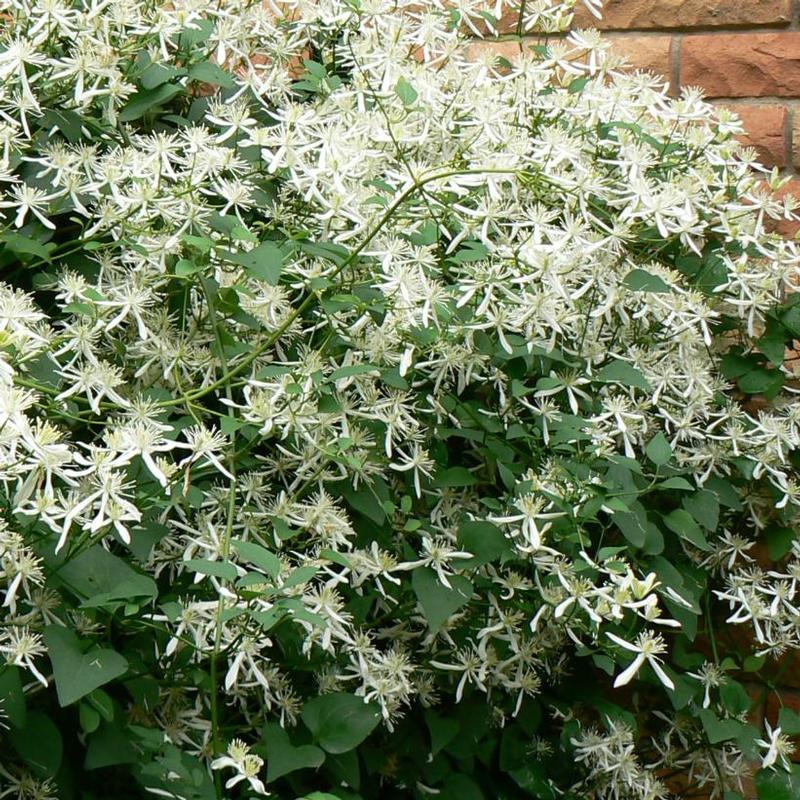« Previous Plant | Next Plant »
Clematis paniculata
Sweet Autumn Clematis
Small, sweetly scented, creamy-white flowers produce plumes of silver-white seed heads.
- » AKA Clematis terniflora, Clematis dioscoreifolia, Clematis maximowicziana
- » Flower Colour: Delicate fragrant white flowers
- » Flower Size: 3 cm
- » Bloom Time: Late summer to early fall
- » Pruning Group: 3
- » Attractive silver seed heads will persist
- » Leaves are mid-green, 12.5 cm long, with three ovate leaflets, semi-evergreen
- » Vigorous habit
- » Unlike most Clematis, will tolerate almost full shade
Additional Information about Clematis paniculata
Clematis are grouped into three different categories for pruning and maintenance:
Group 3: Late Flowering - Flowers form on the terminal 60-90 cm of the current season's growth. Some bloom as early as midsummer and continue into the fall. In early spring, prune each stem, leaving the lowest 2-3 buds. The new growth can be tipped back when it reaches about 30 cm, to induce better branching and flowering.
Growing & Maintenance Tips for Clematis paniculata
Clematis grow best in a rich, moist to average, well-drained soil, in full sun. Protection from intense afternoon sun is beneficial. Large flowering bi-colours, reds and blues, may fade quickly if planted in direct sun. Roots need a cool environment to thrive; it is recommended planting a ground cover or shallow rooted perennial to shade the roots; mulching is suggested. Plant the crown 3-5 cm below the soil's surface. Clematis are slow to establish and initially need to be tied to a trellis or fence to begin climbing.
